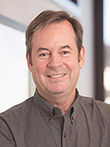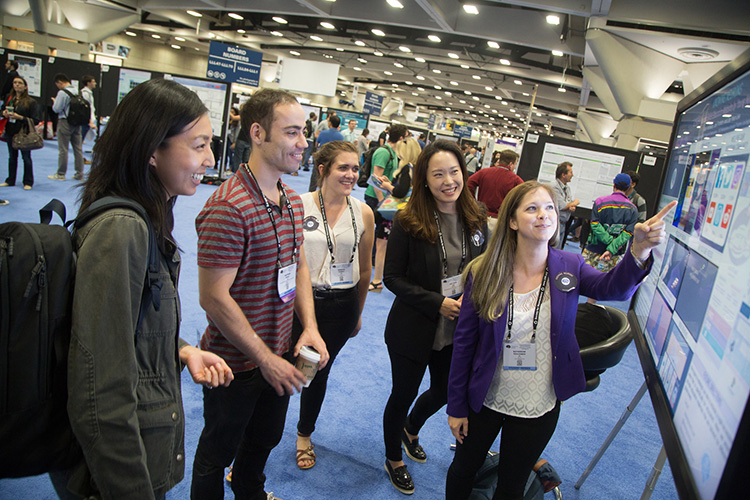
Message From SfN President Richard Huganir: The Stories of Neuroscience

Since my days as a graduate student I have been driven to understand how memory is encoded in the brain — to dissect the underlying molecular, cellular, and circuit mechanisms in order to construct a complete knowledge of how memories influence our behavior. How does learning and memory shape our experiences, and conversely, how do those experiences define who we are, what we feel, and how we interact with the world? It is with this passion, curiosity, and commitment to the field that I first joined the Society for Neuroscience (SfN) — as a young graduate student eager to find answers in my field of study. Throughout this journey, SfN has provided me with a foundation that has shaped my career and reinforced my joy for neuroscience and my search for answers.
In the Society’s nearly 50 years, the neuroscience community has combined the same passion and drive that I have experienced in order to pursue new ideas and understand how the nervous system works. I hope to encourage each of you to connect with what inspires and motivates you in our chosen field, and how being a member of our Society has enriched your life, professional relationships, knowledge, and career opportunities. I want to encourage you to be active. Each of you, regardless of the stage in your career or field of study, has something unique to share and important to learn. SfN embraces a simple model — to listen to members and work with them to develop programming and events that continually evolve with the changes in neuroscience and the world. I can tell you from personal experience that the SfN Council and staff take this responsibility seriously.
Celebrating Scientific Exchange
By bringing together scientists of diverse backgrounds at its annual meeting, this year November 3–7 in San Diego, California, the Society facilitates discussion of complex scientific topics and creates an atmosphere that encourages creativity in research and innovative discovery and seeks to optimize opportunities for its members.
Since Society members first gathered in Washington, D.C., for the inaugural annual meeting in October 1971, the number of attendees has grown more than twentyfold. Over the last decade the meeting has grown to 30,000, making SfN’s annual meeting the largest neuroscience conference in the world and a premier venue to share new ideas and scientific knowledge. Neuroscience 2017 hosted more than 13,000 abstract presentations, on topics including the hippocampus, Alzheimer’s disease, Parkinson’s disease, fMRI, electrophysiology, development, behavior, memory, and more. This wealth and breadth of research inspires me to look to the future and to the once inconceivable neuroscience research that it may hold. At the same time, I am equally compelled to reflect on the fact that, as the Society has grown, its core values have never wavered.
At the very first meeting, SfN Council recognized the importance of geographical diversity. Subsequent meetings were held in different regions of the U.S. and Canada, and the Society has consistently encouraged the participation of international scientists essential for creating a venue for global collaboration. We know that individual efforts to advance the field are made more effective and valuable when members engage with one another, which is why your membership in our community and participation in the annual meeting is so vital.
In addition to geographical diversity, Council highly valued intellectual diversity that continues to be realized today in the Society’s support of interdisciplinary collaboration. Through dedicated programming, the Society works to assure a space that is inclusive with respect to race, gender, ethnicity, field of study, and institution. SfN has long championed programs to promote gender and racial diversity at all levels of the scientific workforce. We must make it our mission now to continue to build on this progress, and the Society needs the voices of all of its members to help ensure that it does.
Providing Opportunities for Lifelong Learning
While the annual meeting continues to be central to the Society’s mission, scientific progress requires year-round collaboration and learning. SfN consistently delivers valuable new scientific training and professional development opportunities for its membership.
In response to the most recent member survey that expressed a desire for more virtual learning and training opportunities, SfN Council supported a program of virtual conferences focused on scientific training and professional development. This effort builds on the successful first SfN virtual conference, produced in 2016 on glial cells, which attracted more than 2,500 registrants. An April 2017 virtual conference on scientific rigor drew 1,300 registrants. The program leverages current technology to offer robust, flexible learning opportunities for our members, bringing experts to you — to your own conference room, laboratory, or kitchen table.
In alignment with the Society’s commitment to scientific rigor, this year’s first virtual conference, held April 10, covered topics related to experimental design, data analysis, and reporting of research findings and is available on demand. Other planned virtual conferences focus on single cell genomics, strategies for mitigating implicit bias, and implementation of optogenetics, this last of which will be the culmination of a series of training modules designed for all SfN members, no matter your career stage. You can read more about the virtual conferences and how they are advancing SfN’s mission in Digital Learning Expands to Include Year-Round Virtual Conferences.
Understanding the Brain and Nervous System
As we learn more about the brain, we come to understand more about ourselves and possible directions our research might take, and we can use this insight to form more productive collaborations. Always be open to taking part in opportunities to learn, expand your network, and collaborate in new ways. Our science and our scientific community is made stronger — and discoveries will come more quickly — as we work together to solve the mysteries of neuroscience and improve human health.





















